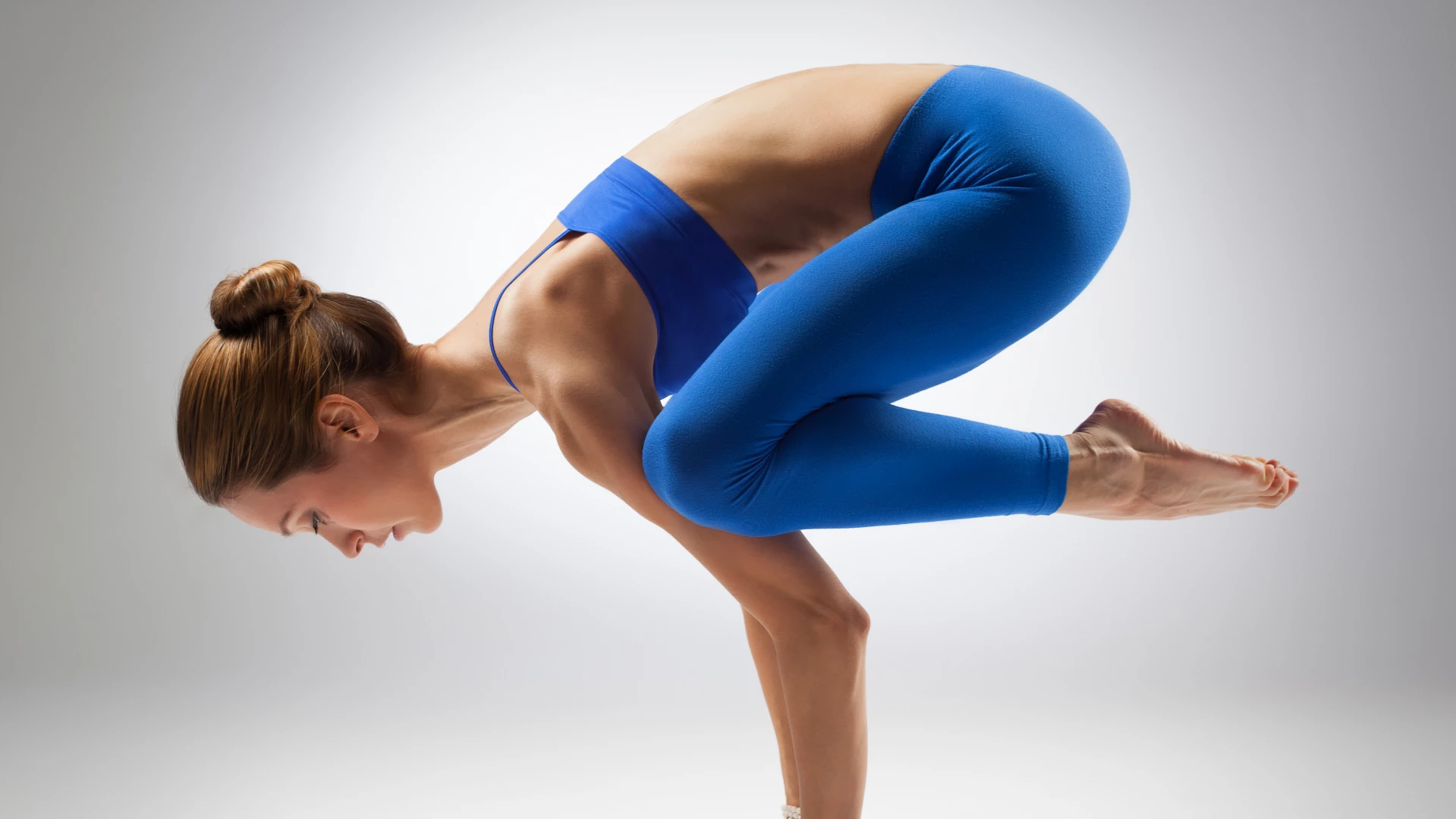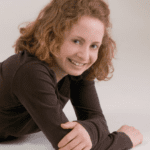Yoga Pose Primer: Balancing Effort and Ease with Crow Pose

Much success and well-being in life depends upon finding balance—the “happy medium,” the “sweet spot” between extremes. For instance, consider balancing personal and career endeavors (“work/life balance”). Giving the right amount of time and attention to both areas of life is how we achieve financial stability and fulfillment. Within this practice we can also find adequate rest, self-care, and social connection. Yoga practice can be a safe, focused environment. In asana practice, we can find the balance that works for each of us, as unique individuals in unique life situations. Arm balances such as Crow Pose (Bakasana) can offer us “trial runs” on finding the place where we can balance between opposing forces. We find success and stability in these postures through balancing with mindful intelligence and persistence, rather than “muscled” or straining effort.
This is the arm balance that yoga instructors often use to introduce more novice students to this group of postures (though it’s anything but easy!). Before executing the yoga posture, make sure that your muscles are warm, especially those in your spine, hips, and arms. A few rounds of Sun Salutations (Surya Namaskara) can do the trick.
How to Do Crow Pose (Bakasana)
- Prepare for Bakasana by coming to a squat with your feet together and chest just slightly lifted off your thighs. This is so that you can activate the core muscles and give the spine room to slightly round forward.
- Place your hands about six inches to one foot in front of you. Position them closer if your arms are shorter, farther away if they are longer. Make sure your hands are at least shoulders-width apart.
- As in other weight-bearing postures, be sure to set up your arms and hands in a way that won’t strain your wrists or other hand and arm joints. (In other words, place a one-inch-thick blanket or a yoga wedge under the heels of your hands.) Spread your fingers wide, with space in between each one, like your hands are starfish and your fingers are the legs.
- Push into each little centimeter of your hands. Spin forward your inner elbows without moving your hands. If your elbows tend to hyperextend hold back a bit on spinning them forward. Go instead to 70 to 80 percent of your maximum range of motion.
- Next, cue into the placement of your knees. Press your knees into your shoulders/upper arms as much as possible.
- When you’re stable here, begin to take yourself into the arm balance. Throughout, keep your knees glued to your upper body. Lift your hips to the point where the space below your knees comes to rest on the backs of your upper arms (the tricep area). Think about going up before you ever even start to think about going forward.
Refinements to Crow Pose
- Starting with your feet on blocks can help. Blocks under your feet will raise your pelvis higher, making this step easier. That back-of-arm area becomes a shelf for that area just below your knees.
- Once you’ve found that, make tiny shifts with your hips up and down until you feel that “balance point.” That place is where gravity can help you stay balanced, rather than pull you forward or back. If you’re afraid of falling forward, place a folded blanket in front of you so that you have a “landing” pad.
- An instructor or knowledgeable fellow practitioner might be able to help you get closer, but it’s a physical feeling that only the practitioner can really identify. That comes from our proprioceptive and vestibular senses. These are our bodies’ systems for interpreting our relationships with space, gravity, and our body parts in relationship with each other. From a physics perspective, here your hands and lower arms are a “fulcrum” supporting the upper body and legs.
- Once you’re at that “balance” point, it’s actually not strength that can keep you there. A certain amount of muscular engagement in the core and arms is necessary to keep your shape here. But what’s more important to staying in this posture is mindful awareness of your body’s messages and intelligent responses to those signals. In that way, this posture—and arm balances in general—are a clear example of “work smarter, not harder.”
Beyond Crow Pose
In 21st-century Western culture, sometimes we think that if we just work harder, we’ll reach success and happiness. On the other hand, there are forces outside of our control that can change our paths, despite what our intentions might be. In addition, we can only work so hard until we have no more to give—no more “gas in the tank,” no more light in our souls. We can try to “work harder” against those forces outside of our control until that point when we simply can’t work any longer, or when we try to we break down.
Another approach is to intelligently, mindfully work with—rather than against—those things that we can’t control. Collaboration, flexibility, and communication are tools for that. All of those help us come to that “sweet spot” of balance, when various forces can exist in harmony. That place of balance is most often one defined point, or a range, but not a static one. That mindful, intelligent awareness we cultivated to get to that “balance point” can also allow us to continually re-evaluate changing conditions, and adjust accordingly.
Mindful Intelligence vs. muscling Through
This re-evaluating and appropriate adjustment is similar to that in, yet becomes increasingly complex in, more “advanced” (as a relative term, in my view) arm balances. Those include Astavarkasana (“Eight-Limbed Arm Balance”) and Visvamitrasana (Sage Visvamitra’s Pose). The differing orientations of body parts in these postures change the demands of balancing, with the physics of lever parts and “fulcrum” varying. Just as with Bakasana, successfully entering and remaining in these postures comes from mindful intelligence of our bodies’ signals and efficient use of their resources. Carrying that work off the mat, we can more easily reach that point where we can we find success and fulfillment through using the resources we already have. This is what balance means, rather than burning ourselves out striving and “muscling through” for something we think is more.
Another asana article from YogaUOnline and writer, Kathryn Boland: Feeling Stressed? Try These Yoga Poses to Unleash Your Inner Strength.
Study with master teacher Natasha Rizopoulis and YogaUOnline – Keys to a Healthy Asana Practice: The Art of Building Core Stability.
Also, read...
Change Your Perspective of Pelvic Tilting: How the Transversus Abdominis Can Help
4 Ways to Practice Locust Pose
5 Keys to Healthy Neck Alignment in Cobra Pose (Bhujangasana)
Related courses
Breath as Medicine: Yogic Breathing for Vital Aging
Yoga and Myofascial Release: Releasing Chronic Tension with the Bodymind Ballwork Method
Yoga and Detoxification: Tips for Stimulating Lymphatic Health

Kathryn Boland is an RCYT and R-DMT (Registered Dance/Movement Therapist). She is originally from Rhode Island, attended The George Washington University (Washington, DC) for an undergraduate degree in Dance (where she first encountered yoga), and Lesley University for an MA in Clinical Mental Health Counseling, Expressive Therapies: Dance/Movement Therapy. She has taught yoga to diverse populations in varied locations. As a dancer, she has always loved to keep moving and flowing in practicing more active Vinyasa-style forms. Her interests have recently evolved to include Yin and therapeutic yoga, and aligning those forms with Laban Movement Analysis to serve the needs of various groups (such as Alzheimer’s Disease patients, children diagnosed with ADHD, PTSD-afflicted veterans – all of which are demographically expanding). She believes in finding the opportunity within every adversity, and doing all that she can to help others live with a bit more breath and flow!



